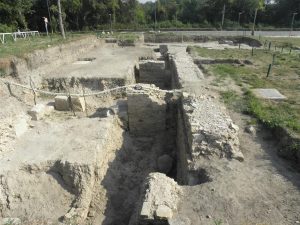Polish archaeologists discovered, what they suppose to have been a building of Armamentarium, or the armoury, of the Roman legion that stationed at the fort in Novae, near Svishtov in Bulgaria.

The discovery was made by a Polish team of archaeologists of the Adam Mickiewicz University in Poznań conducting the research as International Interdisciplinary Archaeological Expedition “Novae”. The structure was unearthed last season, but its function was determined this year. It was possible due to discovery of new parts of the architectural layout, which resembles older, Hellenistic arsenals, known from Asia Minor. The building is dated to the second half of 2nd century AD and covers an area of nearly 1000 square metres. The structure was held by six monumental columns lined up in two rows. Its roof was covered with tiles. In later times the building was rebuilt expanding its size twice. The structure functioned at least until the end of the 4th century.

The building served as place for keeping armaments of the Legio I Italica, the Roman legion which stationed at Novae. Military equipment might have contained spears, armours, swords, helmets, but also siege engines such as ballistas or onagers (catapults). Archaeological finds from the structure include a bone coating of a sword’s hilt, iron points of arrows and spears, a Dacian spear called rhomphaia, shield bosses, and parts of a helmet and lorica squamata type armour. Furthermore a piece of a lime statue was found, depicting a leather armour of a centurion.
(after Nauka w Polsce, Piotr Zambrzycki & Andrzej B. Biernacki)